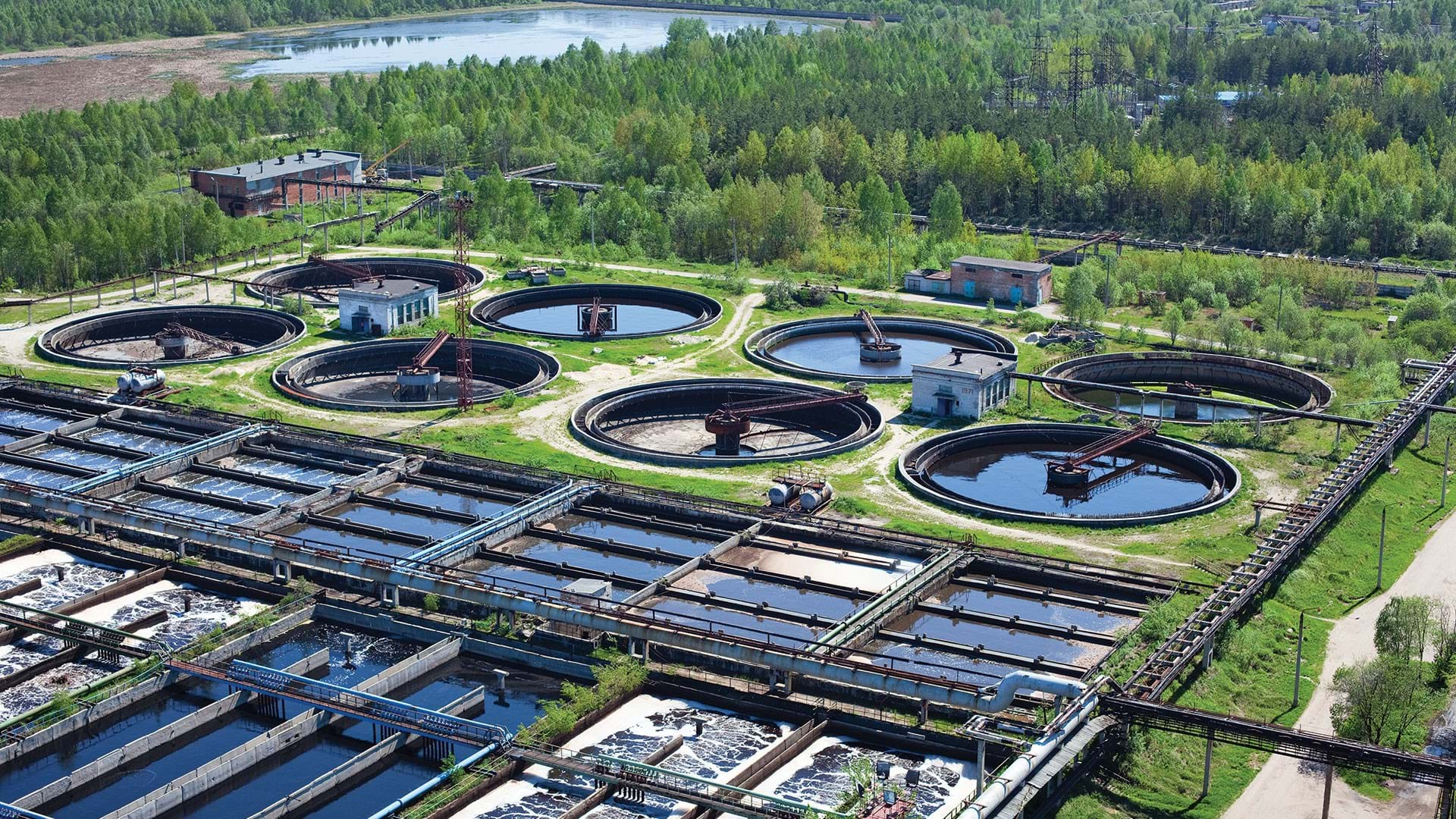Go With the Flow

Gordon Varney and Lydia Gaunt explain how to select pumps in the water, wastewater and sewage industry
THE THREE main pump applications discussed in this article are water, wastewater and sludge. The differences between these fluids can lead to diverse pumping requirements and specific pump selection.
Water and wastewater treatment typically run as continuous processes and where possible there is a preference to convey the main process stream through the works by gravity. This is particularly important when dealing with large volumetric flow rates, in order to minimise the use of pumping stations and the inherent energy and maintenance costs. However, due to specific site constraints, higher construction costs or topography, the requirement to raise water levels is sometimes unavoidable and pumping is therefore necessary.
This article will discuss some of the considerations when selecting suitable pump types for transporting water, wastewater and sludge. It is not definitive and is by no means a complete review of handling water and sludge by pumping, but provides some useful information and a good basis of key considerations.
Water treatment
Water treatment works (WTWs) that are located adjacent to a reservoir generally utilise the upstream head to convey the water into and, where possible, through the works by gravity. If you are not so fortunate to have the driving force of a reservoir, you must rely on feeding the works with water from a borehole or river source using pumps. In the river case, it is commonly referred to as the low lift pump station, as the pressure required to lift from source to the works is comparatively low.
Once the water is treated and considered potable, a final pump set is required to increase the pressure of the water for use in the mains. This is often referred to as the high lift pump station, as the pressure required for mains distribution is higher, in order to be sufficient for use at the customers’ connection.
The major driver for pump selection in WTWs is for the pump not to contaminate or affect the quality of the raw or potable water. Generally, pumps used for drinking water must be approved for use by a regulatory body such as the Drinking Water Inspectorate (DWI). The Water Industry Mechanical and Electrical Specifications initiative (WIMES) also provides good guidance on the requirements for mechanical and electrical equipment.
Wastewater treatment
Wastewater treatment works (WwTWs) are required to treat water that has been used for domestic, industrial, commercial or farming purposes, and contains various contaminants. The process stream both to and within a wastewater treatment works, again is conveyed by gravity where possible.
Similar to a WTW it is usually required to be pumped up to the start of the treatment process to allow it to gravitate through the works. As the treated wastewater is usually discharged to river at a lower level to the works, unlike potable water, a final pump station is not required, unless river levels prove a need.
Wastewater can generally be treated the same as water when selecting a pump type, as the flow properties are similar. However, as there is less regulation over the pump materials and more widespread use of submersible pumps, selection can be more straightforward.
Sludge pumping
Sludge is produced at various stages of a water or wastewater treatment works. Sludge produced includes clarified sludge from coagulation/flocculation and filtration in a WTW or primary sludge from the primary settlement tanks (PSTs) and surplus activated sludge (SAS) from secondary treatment in a WwTW. Primary sludge frequently has a dry solids concentration range of 3-6%. SAS will often have a dry solids concentration of around 1%.
Alternative calculation methods must be used when sizing pumps for sludge with a dry solids content of 2% or greater. For example, the methodology described in Technical Report TR 185 “How to Design Sewage Sludge Pumping Systems”.
It is also important to consider pipe sizes when dealing with sludge to avoid deposition and blockages, not forgetting the balancing act between pipe size and the desire to achieve self-cleansing velocity in the pipework.
Treatment works that have sludge-thickening systems also often receive imported sludge from other sites. This imported sludge can be of varying concentrations, causing fluctuations in sludge pumping around site worth considering when specifying and sizing the pump. Thickened sludge may reach dry solids concentrations as high as 10%, which can be difficult to calculate and require the input of the pump supplier.
Pump types
The following will concentrate on the two types of pumps typically used and considered when pumping water, wastewater and sludge: centrifugal, and positive displacement. The subsequent sections provide examples of each, and reasons for their use.
To begin, the following key factors are important to consider when selecting the correct pump, not just in the water and wastewater industries.
Pump considerations
Recent Editions
Catch up on the latest news, views and jobs from The Chemical Engineer. Below are the four latest issues. View a wider selection of the archive from within the Magazine section of this site.




